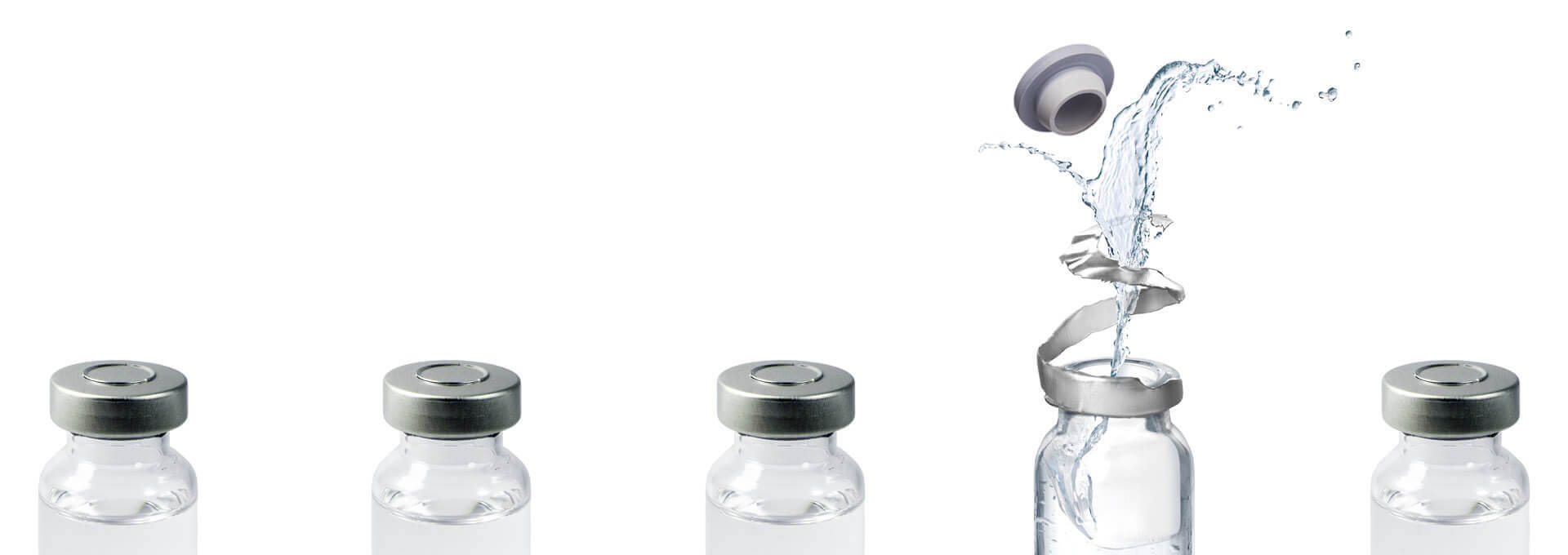Four Scenarios of Regulatory Relief from PAS and CBE-30 for CCS and Component Changes

When the U.S. FDA published Guidance for Industry: COVID-19 Container Closure System and Component Changes: Glass Vials and Stoppers Guidance in March 2021, it opened the door for regulatory relief for certain post-approval changes (1). This article makes four recommendations for prior-approval supplement (PAS) relief to CBE-30 and offers two overarching suggestions to expedite primary packaging changes, in general.
Background
In the late 1990’s, the U.S. FDA’s Center for Drug Evaluation and Research (CDER) along with the Centers for Biologics, Veterinary Medicine, and medical devices (CBER, CVM, CDRH), were developing regulatory relief approaches to address the increasing number of both pre-marketing and post-marketing submissions. Specifically, CDER had the PDUFA goals to meet. Consequently, the numerous types of packaging changes had to be addressed from multiple approaches.
The respective approaches were:
- The CDER/CBER Container Closure System Guidance (1999) (2)
- The Type III DMF Strike Force (March, 2000–December, 2003), which evaluated frequently referenced packaging DMFs as well as packaging bundles (3)
- The Type III Filing Mechanism Letter was applied (2003 and 2004) to avert two major parenteral drug shortage situations in CDER, CBER, CVM and CDRH (4). In both cases, the FDA had to expeditiously address elastomeric closure changes. Case 1 assisted 33 pharmaceutical companies, and Case 2 included 129 NDAs, 54 ANDAs, 127 INDs, 13 BLAs, 4 NADAs, and 6 PLAs.
- The bundling of post-marketing supplements (2000), where the same packaging change was applied by one applicant
- The CDER–CBER Comparability Protocol Guidance (2003) (5)
- The CDER’s first packaging comparability protocol (2003) for solid oral dosage forms in blister packaging or pouches. The protocol applied the comparability concept as well as the bundling policy for 41 NDAs and 1 ANDA (6).
- The Changes to an Approved NDA or ANDA Guidance CDER (2004), where Attachment C, entitled “CDER-Approved Drug Products,” established the policy that there is a low safety risk of using approved solid oral dosage form (SODF) primary packaging for other SODFs (7). In addition, this Guidance introduced the post-marketing safety concept of packaging providing the same or better protective properties.
Current COVID-19 Pandemic Situation
Since CDER and the respective FDA Centers began developing and applying innovative regulatory policies over 20 years ago, the ICH, USP, and FDA have either refined the initial policies or created new guidelines, chapters, guidances, MAPPs and SOPPs. Each of these refined or new documents are outlined in the COVID-19 Glass Vials and Stoppers Guidance.
The COVID-19 Guidance (pp. 6–7) encourages Industry to propose risk-based considerations for a lower reporting category of primary parenteral changes. For a CBE-30 to be an acceptable reporting category instead of a PAS, the applicant must provide data to justify the risk of a lower reporting category. In addition, the COVID-19 Guidance (pp. 7–8) endorses the use of comparability protocols to ensure the parenteral drug is available to the patient.
Due to this terrible pandemic, the FDA has opened the “regulatory door” for regulatory relief to be established. For both Industry’s and FDA’s consideration, possible solutions are outlined, based on precedented FDA accomplishments and either refined or new ICH Guidelines, FDA Guidances, CDER MAPPs, CBER SOPPs and USP Chapters.
Two Regulatory Relief Suggestions to Assist the Patient, Industry and FDA
1. Action Needed: Eliminate the glass vial and stopper high risks requiring a PAS.
Currently, the following require a PAS:
- Glass ampule to glass vial and stopper
- Single-unit dose glass vial and stopper to a multiple-dose glass vial and stopper
- Change in the size and/or shape of a glass vial and/or stopper
- Change to a glass vial and/or stopper that does not provide the same or better protective properties
Suggestion 1: Amend the COVID-19 Guidance with the following information, enabling CBE-30 submissions because the suitability of the glass vial and the stopper have been established.
- Develop an FDA–Industry document that outlines the approved glass vials and stoppers for parenterals in these categories:
- Drug product solutions
- Lyophilized drug products
- Diluents
2. Action Needed: Assign a full-time, dedicated packaging expert to direct the CDER packaging policy development and the evaluation of parenteral packaging components.
Currently, because Type III DMFs are not directly monitored via the User Fee requirements, developing and maintaining CDER’s packaging policies is not a top priority.
Suggestion 2: CDER should have one packaging expert dedicated full time to evaluate Type III DMFs for parenteral packaging components (primary and secondary). Glass vial and stopper DMFs would be evaluated completely as the DMFs were evaluated under the DMF Strike Force. Furthermore, the suitability (protection, safety, compatibility and performance), according to current documents (guidelines, chapters, guidances, MAPPs, and SOPPs), of each glass vial and stopper would be summarized in the DMF. Thus, the summary would enable the safety justification of a lower reporting category. In addition, the summaries could be coordinated to address Suggestion 1. The CDER expert would also direct packaging policy via the Emerging Technology Team and the USP Packaging Chapters (new and revised) as well as the ICH. Certainly, the packaging expert would coordinate with OPPQ/CDER and the other FDA Centers.
Four CBE-30 Scenarios that Ensure the Patient is CMC Safe in the New CCS
Basis of the Four Scenarios: Each of these scenarios pertains to a drug product (DP) solution, as that is the highest risk parenteral compared to a either a lyophilized product or a diluent.
Four critical DP (solution and lyophilized) and Diluent categories that justify a CBE-30 for the proposed container closure system (CCS):
- The number of batches to be manufactured that meet the Release Specifications: Comparison of proposed CCS to current CCS.
- Suitability data: Comparison of the proposed CCS to the current CCS. Suggestions 1 and 2 would assist with the required comparison.
- Stability data:
- <5 years or >5 years established in current CCS
- 3 months or 6 months long-term in the proposed CCS
- Post-Approval Packaging Validation Commitments to ensure commercial manufacturing yields a safe drug.
Scenario 1: Glass ampule to glass vial and stopper with current CCS DP >5 years
- Two batches: the proposed glass vial and stopper are used in approved products of similar pH
- Glass vial and stopper suitability is acceptable based on available data
- Two batches; 3 months of long-term stability data
- Commitment to provide 2 packaging validation runs to ensure reproducible process
Scenario 2: Single-unit dose glass vial and stopper to a multiple-dose glass vial and stopper with current CCS DP <5 years
- Three batches: the proposed glass vial and stopper are used in approved products of similar pH
- Glass vial and stopper suitability is acceptable based on available data
- Three batches; 6 months of long-term stability data
- Commitment to provide 3 packaging validation runs to ensure reproducible process
Scenario 3: Change in the size and/or shape of a glass vial and/or stopper with current CCS DP >5 years
- Two batches: the proposed glass vial and stopper are used in approved products of similar pH
- Glass vial and stopper suitability is acceptable based on available data
- Two batches; 3 months of long-term stability data
- Commitment to provide 2 packaging validation runs to ensure reproducible process
Scenario 4: Change to a glass vial and/or stopper that does not provide the same or better protective properties with current CCS DP >5 years
- Three batches: the proposed glass vial and stopper are used in approved products of similar pH
- Except for the stopper leachable compound, glass vial and stopper suitability are acceptable based on available data; the stopper leachable is shown to be safe via CMC and nonclinical data
- Three batches; 6 months of long-term stability data
- Commitment to provide 3 packaging validation runs to ensure reproducible process.
Conclusion
Prior to the COVID-19 pandemic, the FDA had made a concerted effort to minimize parenteral drug shortages. Now the pandemic has added a dangerous parameter, causing additional drug shortages for all aspects of the pharmaceutical industry. Based on more than 20 years of the regulatory documents (guidelines, guidances, chapters, MAPPs, and SOPPs) issued since 1999, team collaboration between Industry and the FDA is essential to both simplify parenteral primary packaging changes and ensure the quality of parenteral drugs.
[Editor’s Note: This Article supplements Dr. Klein’s presentation at the 2021 PDA Parenteral Packaging Conference on 27 April.]
References
- FDA Guidance for Industry: COVID-19 Container Closure System and Component Changes: Glass Vials and Stoppers, CDER/CBER (2021)
- FDA Guidance for Industry: Container Closure Systems for Packaging Human Drugs and Biologics, CDER/CBER (1999)
- Co-authors of the DMF Strike Force proposal to Dr. Woodcock were Ms. Maust and Dr. Klein.
- The primary CMC Reviewer for both situations was Dr. Klein.
- Draft Guidance for Industry: Comparability Protocols—CMC Information, CDER/CBER (2003).
- The primary CMC Reviewer for the submission was Dr. Klein.
- Guidance for Industry: Changes to an Approved NDA or ANDA, CDER (2004)



 As a CMC consultant with DLK Consulting Services, Inc. (2019), Donald N. Klein, PhD, focuses his efforts on radiopharmaceuticals, new drugs, and pharmaceutical packaging. Dr. Klein’s 26 years of regulatory and scientific experience enables him to provide CMC advice to industry with 23 of those years as a dedicated FDA public servant. The FDA Commissioner honored Dr. Klein with the FDA Distinguished Career Service Award in 2017. He can be reached at
As a CMC consultant with DLK Consulting Services, Inc. (2019), Donald N. Klein, PhD, focuses his efforts on radiopharmaceuticals, new drugs, and pharmaceutical packaging. Dr. Klein’s 26 years of regulatory and scientific experience enables him to provide CMC advice to industry with 23 of those years as a dedicated FDA public servant. The FDA Commissioner honored Dr. Klein with the FDA Distinguished Career Service Award in 2017. He can be reached at